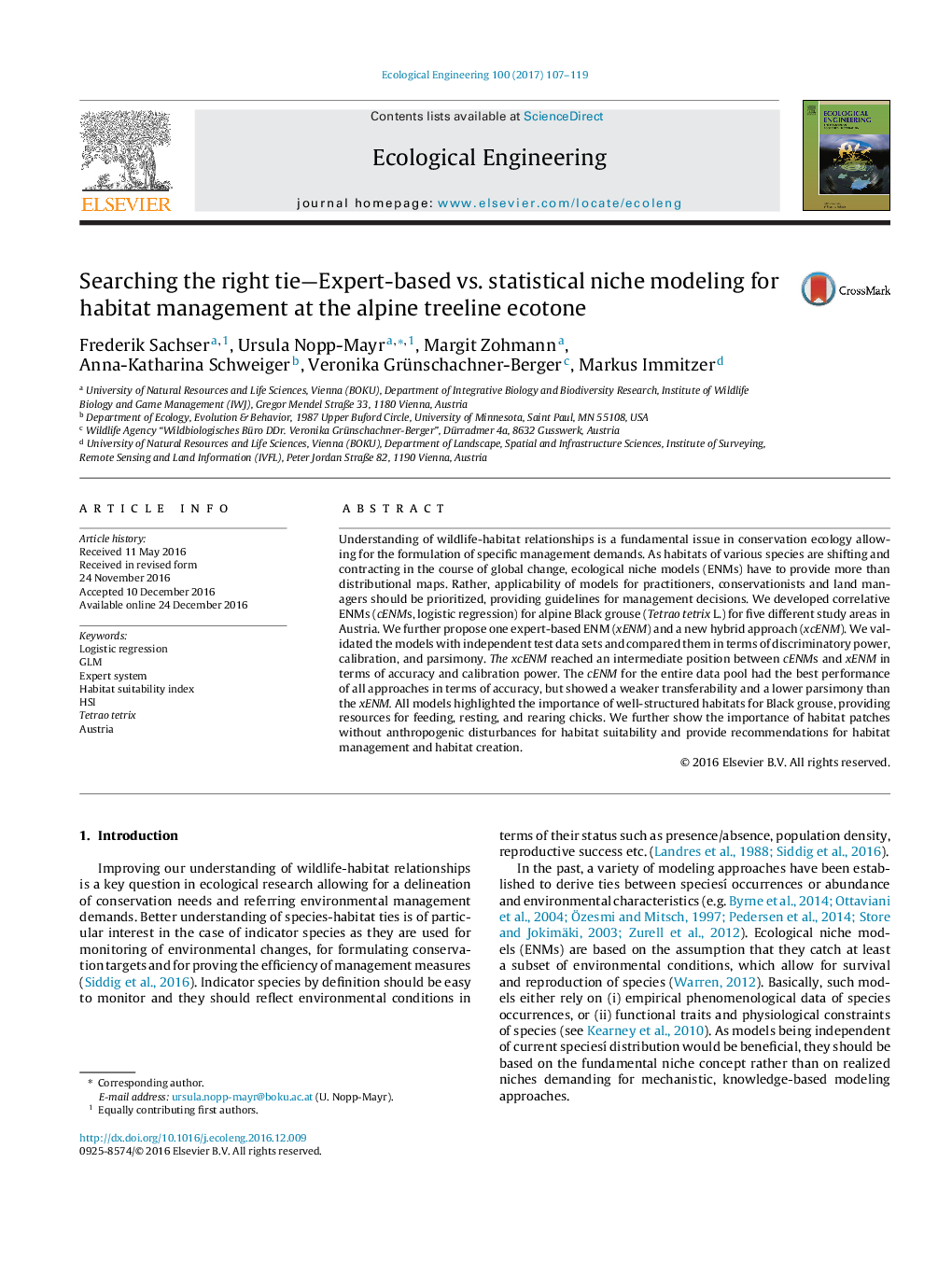| Article ID | Journal | Published Year | Pages | File Type |
|---|---|---|---|---|
| 5743711 | Ecological Engineering | 2017 | 13 Pages |
â¢We developed correlative and expert-based ecological niche models for Black grouse.â¢We established a hybrid model addressing the fundamental and realized niche.â¢We compared the models considering discrimination, calibration, and parsimony.â¢We infer on practical use of our models in the face of habitat management issues.â¢Our models lend themselves as decision support tools for habitat management.
Understanding of wildlife-habitat relationships is a fundamental issue in conservation ecology allowing for the formulation of specific management demands. As habitats of various species are shifting and contracting in the course of global change, ecological niche models (ENMs) have to provide more than distributional maps. Rather, applicability of models for practitioners, conservationists and land managers should be prioritized, providing guidelines for management decisions. We developed correlative ENMs (cENMs, logistic regression) for alpine Black grouse (Tetrao tetrix L.) for five different study areas in Austria. We further propose one expert-based ENM (xENM) and a new hybrid approach (xcENM). We validated the models with independent test data sets and compared them in terms of discriminatory power, calibration, and parsimony. The xcENM reached an intermediate position between cENMs and xENM in terms of accuracy and calibration power. The cENM for the entire data pool had the best performance of all approaches in terms of accuracy, but showed a weaker transferability and a lower parsimony than the xENM. All models highlighted the importance of well-structured habitats for Black grouse, providing resources for feeding, resting, and rearing chicks. We further show the importance of habitat patches without anthropogenic disturbances for habitat suitability and provide recommendations for habitat management and habitat creation.
Graphical abstractDownload high-res image (127KB)Download full-size image
